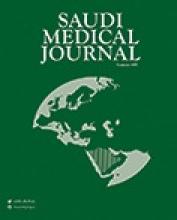Abstract
OBJECTIVE: To investigate the percentage of body weight represented by school backpacks, to determine the dimensions of school packs, and to identify the methods of carrying book bags by elementary school boys.
METHODS: A cross-sectional study, using a multistage random sampling technique, was conducted during the Spring of 2005. Six elementary schools from Riyadh were included involving 702 Saudi boys in grade 1-6. Measures included body mass, height, biacromial and bi-iliac breadths, triceps and subscapular skinfolds, calculated fat percentage, school bag weight and dimensions. Students were also asked to respond to questions related to how they travel to and from school, how they carry the bag, and if they have pain due to bag carriage.
RESULTS: Body fat percentage increased from 14.2% in the first graders to 24.6% in the sixth graders. The increase in body dimensions, however, was less than the increase in the fat percentage. School bag averaged 3.2 kg in absolute weight and 10.7% relative to student's body mass. Nearly 50% of the sample carried backpacks weighing more than 10% of their weight. Bag surface area averaged 1.05 m2 while the ratio of bag surface area to student's trunk area ranged from 129% in the first graders to 81% in the sixth graders. Approximately 29% of the students walk to and from school. More than 65% of the sample carried their bags over one or 2 shoulders, 20% used single strap bags carried by one hand and 14.5% had bags with wheels. Over one third of the students reported experiencing bodily pain due to bag carriage.
CONCLUSION: A considerable proportion of Saudi school boys carried an overloaded and oversized backpacks. Moreover, one third of the sample experienced bodily pain related to school bags. It is recommended that school bags be limited to no more than 5-10% of student's body weight.
- Copyright: © Saudi Medical Journal
This is an open-access article distributed under the terms of the Creative Commons Attribution-Noncommercial License (CC BY-NC), which permits unrestricted use, distribution, and reproduction in any medium, provided the original work is properly cited.






